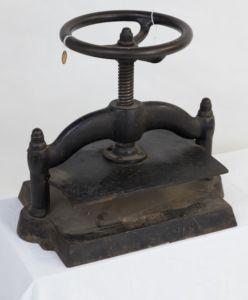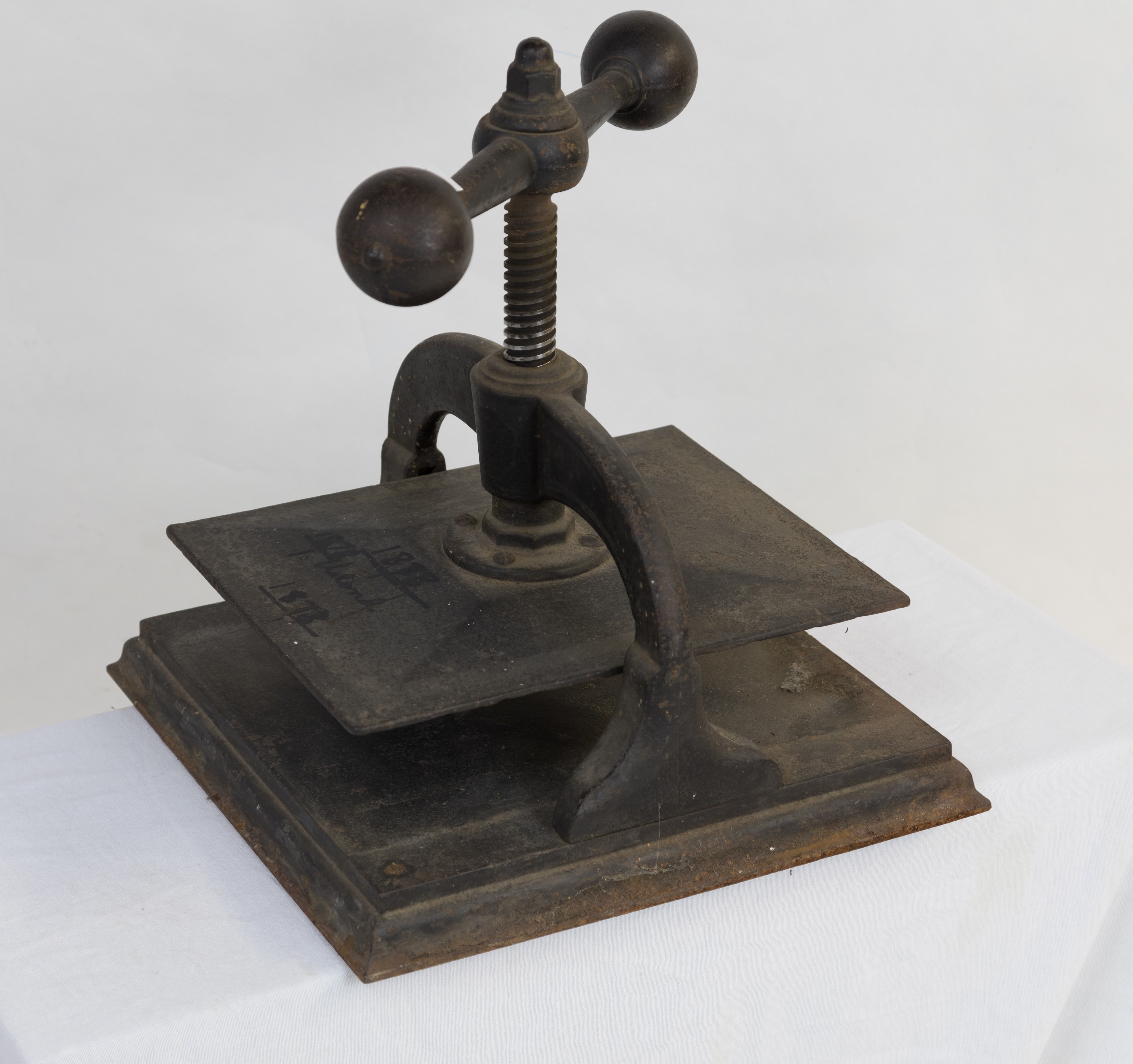August 15, 2017

Above: one of two copy presses in the Hennepin History Museum collection.
The letter copying press was invented in 1780 by the Scotsman James Watt, also the inventor of the steam engine. Watt’s machine eliminated the need for laborious hand copying of documents and provided the user with completely accurate copies of the original. He patented two versions of the device. One used two opposing crank operated rollers like a washing machine wringer, and the other used a screw press mechanism.
The process worked as follows. First the letter (or document) to be copied had to be written with a special soluble ink and allowed to dry without blotting to ensure that it would have a thick ink deposit.
Copies could be made for up to about 24 hours but the best were made within the first few hours. Next a copiest would prepare a “sandwich” to place in the copy press. It consisted of a sheet of oiled paper followed by a water dampened sheet of thin tissue paper, then the original document with the inked side facing the tissue paper and finally another sheet of oiled paper. The “sandwich” was then placed in the copy press and pressure was applied usually by turning a screw or using a lever. After a short time the pressure was released and enough of the ink from the original would have wicked into the tissue paper to make a copy. Thin tissue paper was used so the document could be read through the paper. The oiled paper prevented the ink from transferring to any other documents if multiple copies were being pressed at the same time.
Copies were often pressed in large quantities where a lot of correspondence was generated like in offices. Bound books of tissue copying paper were frequently used with originals and oiled paper inserted in them as described above. Special brushes or dampening reservoirs were used when copying large quantities at once. Small portable copy presses were also developed for use when someone was traveling. In early America they were quickly adopted by notable people including George Washington, Benjamin Franklin and Thomas Jefferson who designed his own portable version. Calvin Coolidge was the last president to have his official correspondence copied on copy presses.
Hennepin History Museum has two of the screw style copy presses. One is closed with a wheel and the other is closed by spinning a straight handle with large, heavy iron balls on the end. The iron balls were used to create centrifical force so that a copiest could open or close the press with one good twirl. This would speed up the process in offices where a lot of copying needed to be done. The straight handles remained popular in England but were mostly replaced by wheels in US machines by 1860.
Although many more sophisticated copying machines and techniques have since replaced Mr. Watt’s invention, it was in common use for over 150 years. It is interesting to note that they were still being manufactured in 1950 and were used in Britain until the late 1950s.
 The iron balls on the ends of the handle allow the press to be closed with one good twirl.
The iron balls on the ends of the handle allow the press to be closed with one good twirl.
About the Author
Mike Larson has been a volunteer working on the inventory project at Hennepin History Museum since January 2017. He has so far cataloged over a hundred objects, primarily large artifacts including a soap box derby car, big-wheel bicycles, a switchboard desk, and—of course—two 19th century copy presses.
Resources
